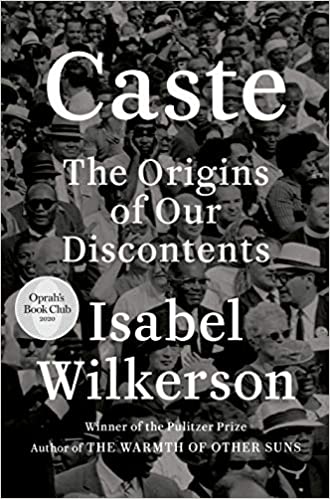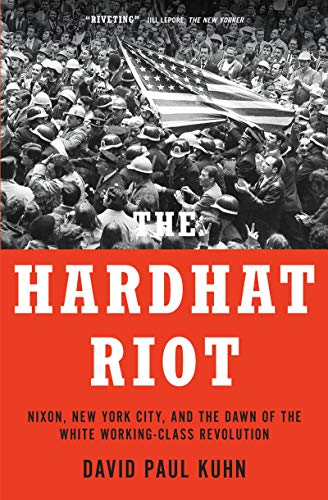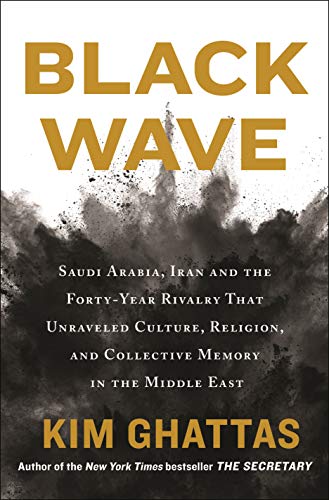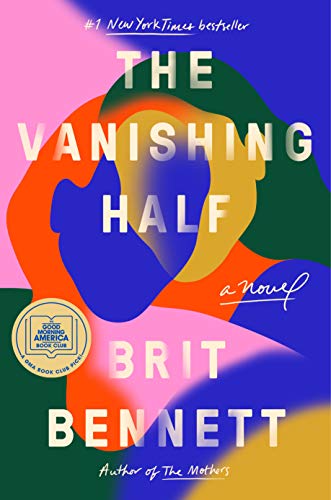Beach Reading

One of the upsides to confinement over the past few months is that I’ve been able to raise my reading capacity. Here are my exceptional encounters. This is mostly “serious beach” reading, if you’ll excuse the oxymoron.
Caste: The Origins of Our Discontents, Isabel Wilkerson

Caste is, I think, destined to be one of the most important books of our time. Wilkerson, who won a Pulitzer for her first book, The Warmth of Other Suns (I also highly recommend), asserts that American racism is the superficial manifestation of an underlying caste system in which people are slotted into a rigid social hierarchy predetermined by some marker. In India, that marker is birth: one is simply borne into a caste that cannot be changed, thus relegated to the limitations society imposes on that caste. In America, that marker is melatonin, skin color. Most of us can see the idiocy of a predetermined social hierarchy when looking at India, but cannot see the parallel with skin color in our country. By drawing that connection, and supporting it with logic and data, Wilkerson helps us understand that American racism reflects underlying social beliefs that oppresses classes of people. As with the Dalits in India, so it is with African-Americans here. India and America both enacted laws that proscribe discrimination, but laws cannot overturn centuries of deeply embedded social structures. Wilkerson writes with grace and prose, sharing her personal experiences to illuminate her points. Caste is thoroughly researched, compellingly argued, beautifully written and, deeply disturbing.
The Hardhat Riot, David Paul Kuhn

The late-1960s and early-1970s saw hundreds of protests across the country, many that were violent, against the Vietnam War. Perhaps the peak (or nadir) of these protests occurred at Kent State, in Ohio, where National Guardsmen shot and killed four students. A few days later, New York City was engulfed in protest marches, first uptown at the funeral of one of the slain Kent State students who was from New York, and then downtown, near City Hall, and across from where the World Trade Center was under construction. Hundreds of workers on that site, most of whom were veterans themselves, spontaneously walked off the job and attacked the antiwar protestors while the police stood by. This is a fast-paced account of that moment, pieced together by interviews and media reports at the time. But the book is about much more than this single event. It delves into how our country was split by opposite world views, galvanized by the Vietnam War but running much deeper. It draws a clear and direct link from that clash 50 years ago to the subsequent evolution of the two main political parties to our present political polarization. The riot itself is told in graphic detail, thrilling in its way, but the deeper exploration of its causes, and the wider implications of its aftermath, show how relevant history is to us today.
Black Wave, Kim Ghattas

It is impossible to write a single, authoritative history of anything, much less an entire region of the world, much less a region as complex as the Middle East, but Ghattas sets a strong foundation for understanding the recent history politics of that region. She focuses on the year 1979, which most of us remember as the year of the Iranian Revolution, when forces aligned with Ayatollah Khomeini overthrew the Shah. That same year, another transformative event took place when militants captured the Grand Mosque in Mecca, directly challenging the legitimacy of the House of Saud. These two simultaneous events sparked a rivalry, driven not by theology (Sunni-Shi’a), as most Westerners assume, but by political power. This conflict set off by these two events in 1979 has defined the region ever since. Ghattas captures the fervor of all sides of this seminal year, details its lasting consequences, thereby enriching our understanding of the history and complexities of this part of the world.
Boom: Mad Money, Mega Dealers, and the Rise of Contemporary Art, Michael Shnayerson

An interest in contemporary art is helpful, but this book is about the business of art rather than the art itself. Famous artists and their works—from Pollack and Warhol to Basquiat and Koons and many more—come in and out of the story, but the focus is on the dealers, especially the most prominent ones, whose names will be familiar to everyone with even a passing interest in contemporary art. Their role in supporting and promoting artists is well described here, providing a good overview of where and how the money (tens of billions of dollars annually) flows. I was struck, however, with two observations about the art business. The first is that, of all the players in this game, the artists get the short end of the stick. Dealers, and collectors, get the vast majority of the riches, while most artists get the (relative) crumbs (Jeff Koons and Damien Hirst perhaps the exceptions). The second thought is that I wonder if we’ve seen the end of this business model as Internet technology displaces these old conventions. Boom is a good place to start for the history and description of the business of art.
Until the End of Time, Brian Greene

There are hundreds of books on cosmology/astrophysics. I think I’ve read half of them. Brian Greene, professor at Columbia, never disappoints. Half of this book covers the “usual” topics of energy, gravity, universe expansion, etc. Greene then connects the rules of physics with biology, which I found illuminating, thus giving us new insights into evolution. He is hopeful that physics can one day even explain consciousness, and many readers will be so persuaded. The heart of the book is Greene’s personal reflections on time, specifically, eternity, a concept we reach for, but can never quite touch. Ultimately this is philosophy, not physics, but in the hands of a master like Greene, there is little distinction between the two.
The Vanishing Half, Brit Bennett

Bennett creates a fictional town in Louisiana, founded by light-skinned African-Americans, who collectively choose to propagate into ever lighter-skinned generations. Two sisters break ranks and leave the town, each going her own, very different, way. This clever construction is a way to examine racial identity, but also the issues of intergenerational relations and the conflict between individual freedom and community responsibility. I found some of the relationships not quite fully formed, but the book is beautifully written and provocative.

